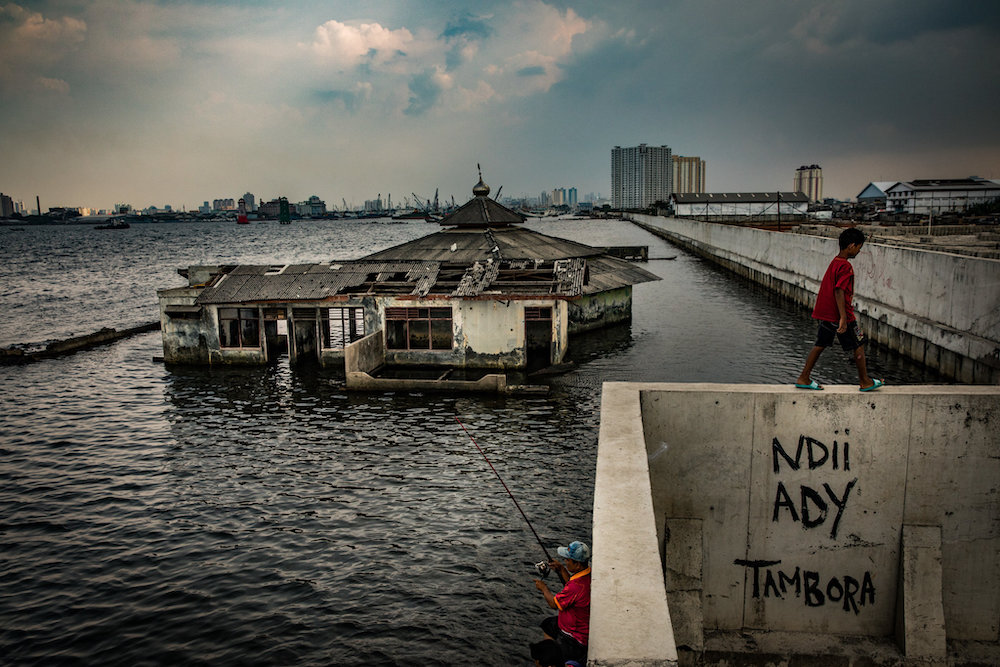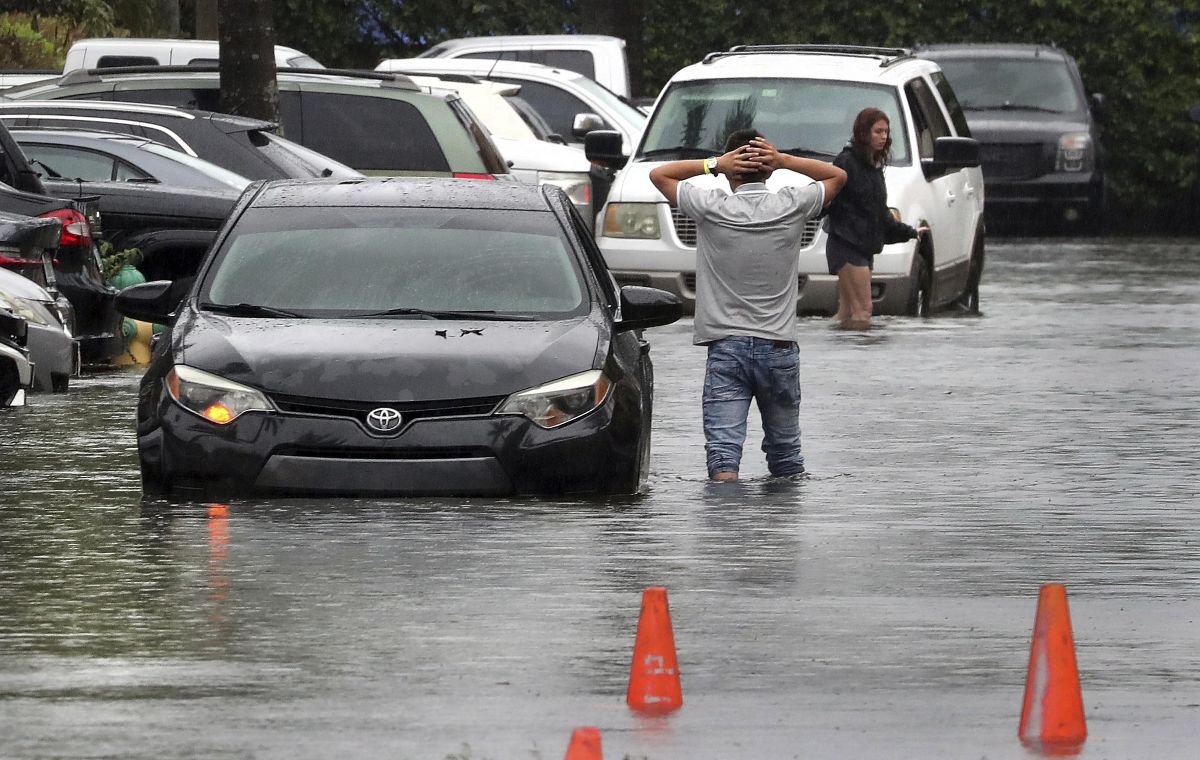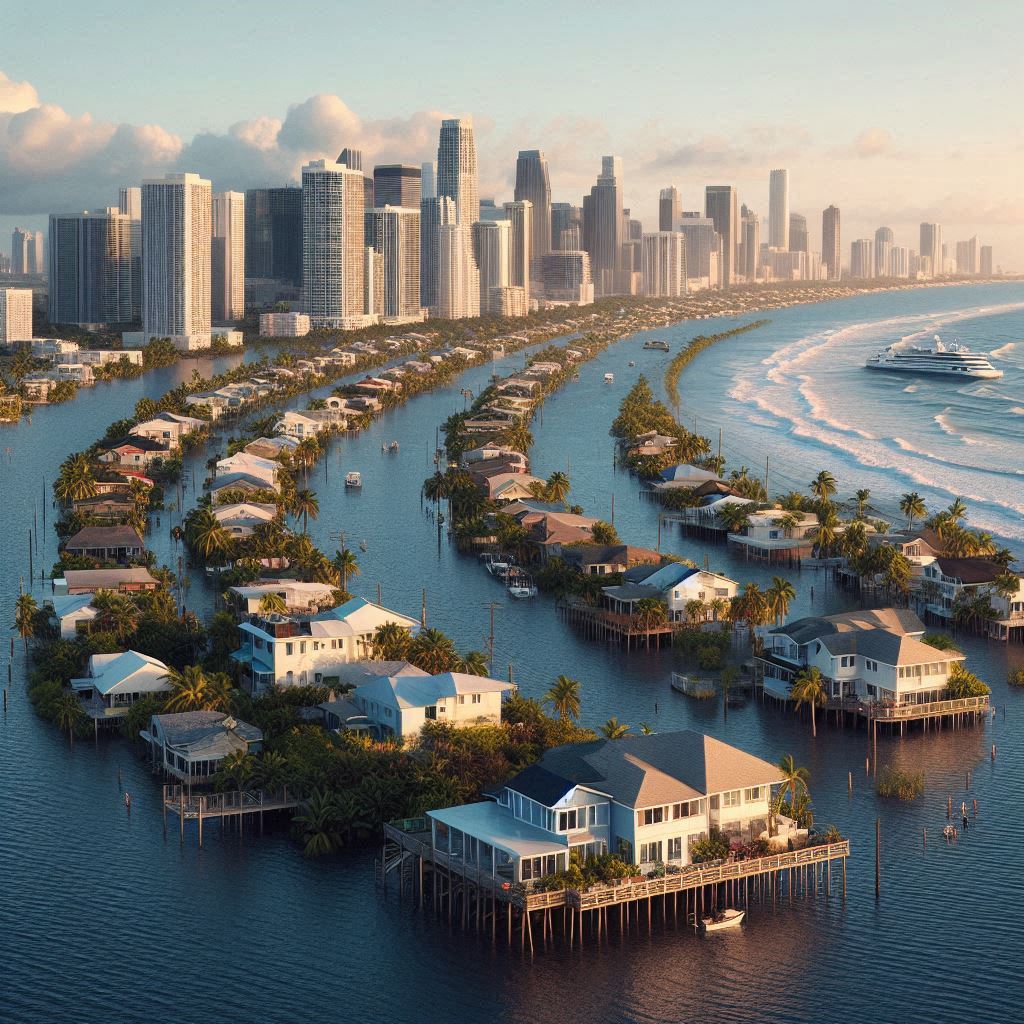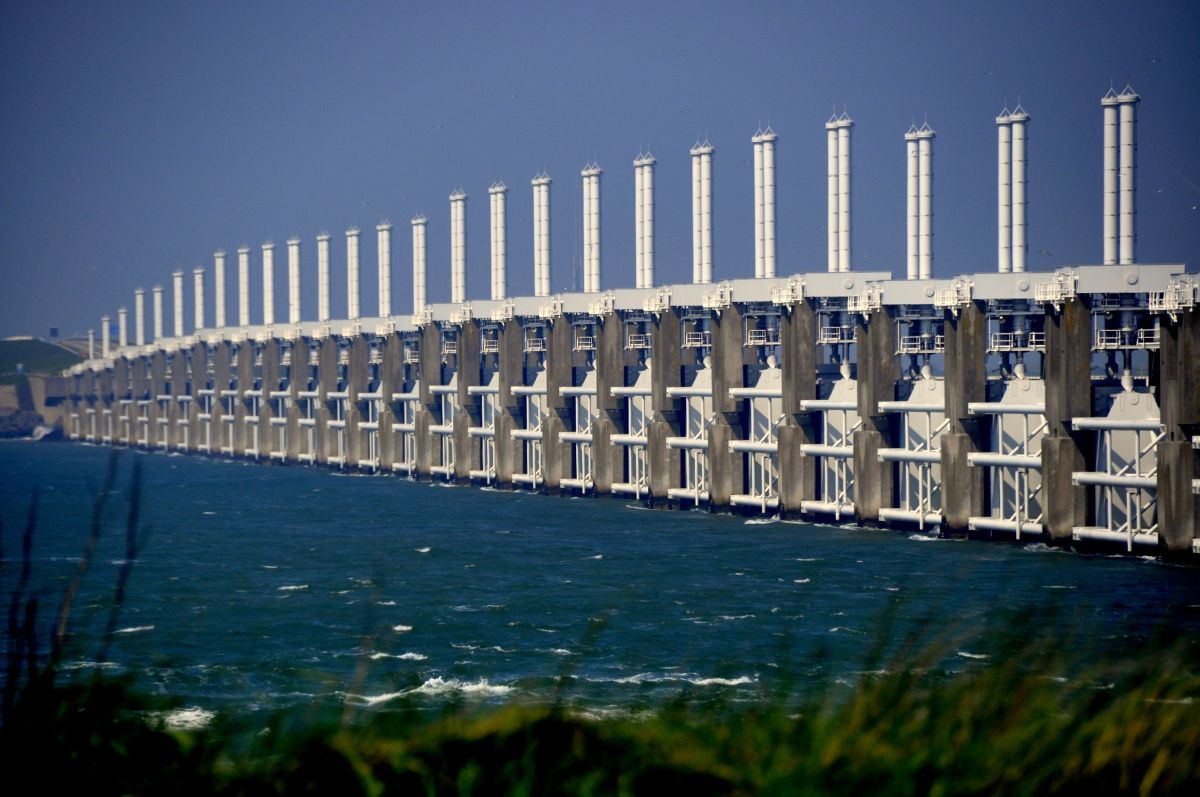
Watch short for this article (5 slides)
The Encroaching Tide: Understanding the Escalating Threat of Global Sea-Level Rise
Coastal communities worldwide, from bustling megacities to remote island nations, are confronting an undeniable and accelerating reality: the relentless rise of the sea. Driven primarily by anthropogenic climate change, rising sea levels pose an existential threat, manifesting as more frequent flooding, vanishing coastlines, contaminated freshwater supplies, and the potential displacement of millions. While the vulnerability of low-lying island nations like Tuvalu is starkly evident, major urban centers like Miami, Jakarta, and Shanghai are also grappling with the immense challenge of adapting to an ocean that is fundamentally reshaping our world. This article delves into the science behind sea-level rise, explores the regions most acutely at risk, examines the cascading consequences, and discusses the urgent need for both adaptation strategies and global climate action.

The Science of Swelling Seas: Unpacking the Drivers
Global mean sea level has risen by about 21–24 centimeters (8–9 inches) since 1880, with about a third of that occurring in just the last two and a half decades. The rate is accelerating. (NOAA - Climate Change: Global Sea Level). This rise is not uniform globally but is driven by several key physical processes linked to climate change:
- Thermal Expansion: The Ocean Warms and Expands
- Mechanism: As greenhouse gases trap more heat in the atmosphere, over 90% of this excess energy is absorbed by the oceans. Just like most substances, water expands when it heats up. Even seemingly small temperature increases across the vast volume of the ocean translate into significant sea-level rise.
- Contribution: For much of the 20th century, thermal expansion was the dominant driver. It continues to be a major contributor, responsible for roughly 40-50% of the observed rise in recent decades.
- Melting Glaciers and Ice Sheets: Adding Water Volume
- Mechanism: Rising global air and ocean temperatures are causing land-based ice to melt at an accelerating pace. This includes mountain glaciers worldwide and, critically, the massive ice sheets covering Greenland and Antarctica. When this land ice melts or flows into the ocean, it directly adds to the total volume of water, raising sea levels globally. (Note: Melting sea ice, like Arctic sea ice, does *not* significantly contribute to sea-level rise because it's already floating in the ocean, displacing its own weight, much like ice cubes melting in a glass).
- Contribution: Ice melt is now the **leading contributor** to global sea-level rise. The Greenland and Antarctic ice sheets hold enough frozen water to raise global sea levels by roughly 7 meters (23 feet) and 58 meters (190 feet), respectively. While complete melting would take centuries or millennia, even partial melt has enormous consequences. Concerns exist about potential **tipping points**, where ice sheet melt could become self-sustaining and irreversible even if global temperatures stabilize. (NASA - Understanding Sea Level: Ice Melt)
- Changes in Land Water Storage: A Smaller but Relevant Factor
- Mechanism: Human activities alter how much water is stored on land. Building large dams can temporarily decrease sea level by holding water back. Conversely, extracting vast amounts of groundwater for agriculture and drinking allows that water to eventually flow into the oceans, contributing to sea-level rise. Groundwater depletion is currently the more significant factor of the two.
Beyond Global Averages: Relative Sea Level Rise and Subsidence

Original: apnews
While global mean sea level provides a benchmark, the impacts felt locally depend on **relative sea-level rise**, which accounts for vertical land motion:
- Land Subsidence: Sinking Ground, Rising Risk
- Cause: Many coastal areas are naturally sinking due to sediment compaction (especially in river deltas) or geological processes. Human activities dramatically exacerbate this, primarily through the excessive extraction of groundwater, oil, and natural gas. This removal allows underground sediments to compact, causing the land surface to sink.
- Impact: Subsidence effectively increases the local rate of sea-level rise. Cities like **Jakarta, Indonesia**, are experiencing extreme subsidence rates of up to **25 cm (10 inches) per year** in some areas, vastly outpacing global sea-level rise and making flooding dramatically worse. Other major delta cities like Bangkok, Ho Chi Minh City, and New Orleans also face significant subsidence challenges.
- Glacial Isostatic Adjustment (GIA): Areas once covered by massive ice sheets during the last ice age (like parts of Scandinavia and North America) are still slowly rebounding upwards now that the ice weight is gone, experiencing relative sea-level *fall* in some places. Conversely, areas around the former edges of these ice sheets are subsiding, experiencing higher relative sea-level rise.
Vulnerability Hotspots: Where the Threat is Most Acute

While rising seas affect all coastlines, certain regions are exceptionally vulnerable:
- Low-Lying Small Island Developing States (SIDS): Nations like Tuvalu, the Maldives, Kiribati, the Marshall Islands, and the Bahamas face an existential threat. Their low elevation (often just a few meters above sea level) makes them acutely sensitive to even small increases in sea level. They face land loss, freshwater contamination, infrastructure damage, and the real prospect of complete inundation and forced displacement of entire populations, despite contributing minimally to global emissions.
- Densely Populated River Deltas: Areas like the Ganges-Brahmaputra Delta (Bangladesh, India), the Mekong Delta (Vietnam), and the Nile Delta (Egypt) support huge populations and vital agriculture. They are threatened by the combined impacts of sea-level rise, land subsidence, reduced sediment supply from upstream dams, and increased river flooding, leading to land loss, salinization of farmland, and displacement.
- Major Coastal Cities: Numerous large cities are built in low-lying coastal zones.
- Miami, USA: Faces unique challenges due to its porous limestone bedrock, which allows rising seawater to infiltrate from below, making traditional sea walls less effective against "sunny day" or nuisance tidal flooding.
- Jakarta, Indonesia: The combination of rapid subsidence and sea-level rise has led the Indonesian government to initiate the complex process of relocating its capital city to Borneo.
- Other highly vulnerable cities include New York City, New Orleans, Venice, Shanghai, Bangkok, Lagos, and Alexandria.
The Cascade of Consequences: Impacts Ripple Inland
Rising sea levels trigger a range of interconnected impacts:
- Increased Frequency and Severity of Coastal Flooding: Higher baseline sea levels mean that storm surges from hurricanes or coastal storms reach further inland and cause more damage. "Nuisance flooding" during high tides, even without storms, is becoming increasingly common in many coastal cities, disrupting transportation and daily life.
- Coastal Erosion: Higher water levels and increased wave action erode beaches, dunes, and coastal cliffs, leading to permanent loss of land.
- Saltwater Intrusion: Rising seas push saltwater further into coastal aquifers (underground freshwater sources) and estuaries. This contaminates drinking water supplies for coastal communities and harms freshwater ecosystems and agriculture reliant on irrigation.
- Damage to Infrastructure: Ports, roads, bridges, railways, airports, power plants, wastewater treatment facilities, and other critical infrastructure located in low-lying coastal areas are increasingly vulnerable to flooding and damage.
- Habitat Loss and Ecosystem Damage: Coastal ecosystems like salt marshes, mangrove forests, and seagrass beds, which provide vital habitat and natural coastal protection, struggle to adapt or migrate inland quickly enough, leading to habitat loss ("coastal squeeze"). Coral reefs are also impacted by warming and acidification.
- Displacement and Migration: As land becomes uninhabitable due to flooding, erosion, or salinization, populations face displacement, potentially leading to internal migration or cross-border "climate refugees," raising complex social, economic, and political challenges.
Responding to the Rising Tide: Adaptation Strategies

Original: Roberto Maldeno
Communities and governments are pursuing various strategies to cope with rising seas, often categorized as protect, accommodate, or retreat:
- Protection (Hard Engineering): Building physical barriers to hold back the sea.
- Examples: Sea walls, dikes, levees, storm surge barriers (like the Thames Barrier in London or the Maeslantkering in the Netherlands), breakwaters.
- Considerations: Can be very effective locally but are expensive to build and maintain, can damage coastal ecosystems, may exacerbate erosion elsewhere, and may eventually be overtopped by future sea-level rise.
- Accommodation (Living with Water): Modifying infrastructure and lifestyles to cope with increased water levels.
- Examples: Elevating buildings and critical infrastructure, designing floodable ground floors or parks, improving drainage systems, developing floating architecture, implementing early warning systems for floods.
- Considerations: Allows continued use of coastal areas but may not be sufficient for extreme sea-level rise and doesn't prevent land loss or salinization.
- Retreat (Managed Relocation): Moving people, assets, and activities away from vulnerable areas.
- Examples: Establishing setback zones prohibiting new construction, voluntary property buy-out programs, planned relocation of entire communities (as considered by some SIDS and initiated for Indonesia's capital).
- Considerations: Often the most sustainable long-term solution for highly vulnerable areas but faces immense social, emotional, economic, and political barriers. Requires careful planning and support for displaced populations.
- Nature-Based Solutions (Green/Soft Engineering): Utilizing or restoring natural ecosystems to provide coastal protection and other benefits.
- Examples: Restoring and conserving mangrove forests, salt marshes, oyster reefs, seagrass beds, and barrier islands. These ecosystems can attenuate wave energy, trap sediment, and adapt vertically to some degree of sea-level rise.
- Considerations: Often provides co-benefits (habitat, water quality), can be cost-effective, but may not provide sufficient protection against extreme events alone and requires suitable environmental conditions.
Many effective adaptation plans involve a combination of these strategies.
The Long View: Committed Rise and the Mitigation Imperative
It is crucial to understand that due to the heat already absorbed by the oceans and the long lifespan of CO₂ in the atmosphere, significant further sea-level rise is already **"locked in" or "committed"** for centuries to come, regardless of future emissions. Our actions today determine the *magnitude* and *rate* of that future rise.
While adaptation is essential to manage the unavoidable impacts, it has limits. The only way to prevent the most catastrophic long-term sea-level rise scenarios (potentially many meters over centuries) is through **deep, rapid, and sustained reductions in global greenhouse gas emissions**. Achieving the goals of the Paris Agreement is critical to slowing the rate of rise and giving communities and ecosystems more time to adapt.
"Adaptation can reduce the impacts of sea-level rise, but it cannot eliminate them entirely, especially under higher emissions scenarios. Mitigation of greenhouse gas emissions remains the most crucial lever for limiting the long-term threat." - Synthesis based on IPCC Sixth Assessment Report findings (IPCC AR6 WGII Report).
Conclusion: Facing the Rising Waters Together
Sea-level rise driven by climate change is a slow-motion crisis with profound global implications. It demands a transformation in how we plan, build, and live along our coastlines. While adaptation strategies are vital for managing the immediate and unavoidable impacts – protecting communities, infrastructure, and ecosystems – they are not a substitute for addressing the root cause. Limiting future sea-level rise requires urgent and ambitious global cooperation to drastically cut greenhouse gas emissions. The fate of countless coastal communities and ecosystems hinges on our collective willingness to act decisively now.